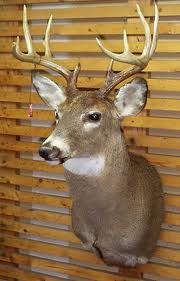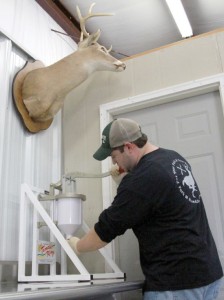Investigators at the New York University School of Medicine have developed a weakly successful vaccine against Chronic Wasting Disease (CWD) in white-tailed deer[1]. CWD is a prion disease which is common in cervids and can cause progressive, irreversible degeneration and death. Though I could not locate any evidence of this disease making the species jump like bovine spongiform encephalitis did, the authors contend that given the large numbers of deer and elk suffering from this disease, there is a possible risk for human infection as well.
 In this study, the investigators comment in the abstract:
In this study, the investigators comment in the abstract:
In the current study, white-tailed deer were orally inoculated with attenuated Salmonella expressing PrP, while control deer were orally inoculated with vehicle attenuated Salmonella. Once a mucosal response was established, the vaccinated animals were boosted orally and locally by application of polymerized recombinant PrP onto the tonsils and rectal mucosa. The vaccinated and control animals were then challenged orally with CWD-infected brain homogenate. Three years post CWD oral challenge all control deer developed clinical CWD (median survival 602 days), while among the vaccinated there was a significant prolongation of the incubation period (median survival 909 days; p = 0.012 by Weibull regression analysis) and one deer has remained CWD free both clinically and by RAMALT and tonsil biopsies. This negative vaccinate has the highest titers of IgA in saliva and systemic IgG against PrP. Western blots showed that immunoglobulins from this vaccinate react to PrPCWD. We document the first partially successful vaccination for a prion disease in a species naturally at risk.
References:
1.Goñi, F., Mathiason, C., Yim, L., Wong, K., Hayes-Klug, J., Nalls, A., Peyser, D., Estevez, V., Denkers, N., Xu, J., Osborn, D., Miller, K., Warren, R., Brown, D., Chabalgoity, J., Hoover, E., & Wisniewski, T. (2015). Mucosal immunization with an attenuated Salmonella vaccine partially protects white-tailed deer from chronic wasting disease Vaccine, 33 (5), 726-733 DOI: 10.1016/j.vaccine.2014.11.035










 particularly Hawaiian hogs and chickens. However, a search of the literature did not find data to implicate the local deer population as a source for foodborne illness.”
particularly Hawaiian hogs and chickens. However, a search of the literature did not find data to implicate the local deer population as a source for foodborne illness.”